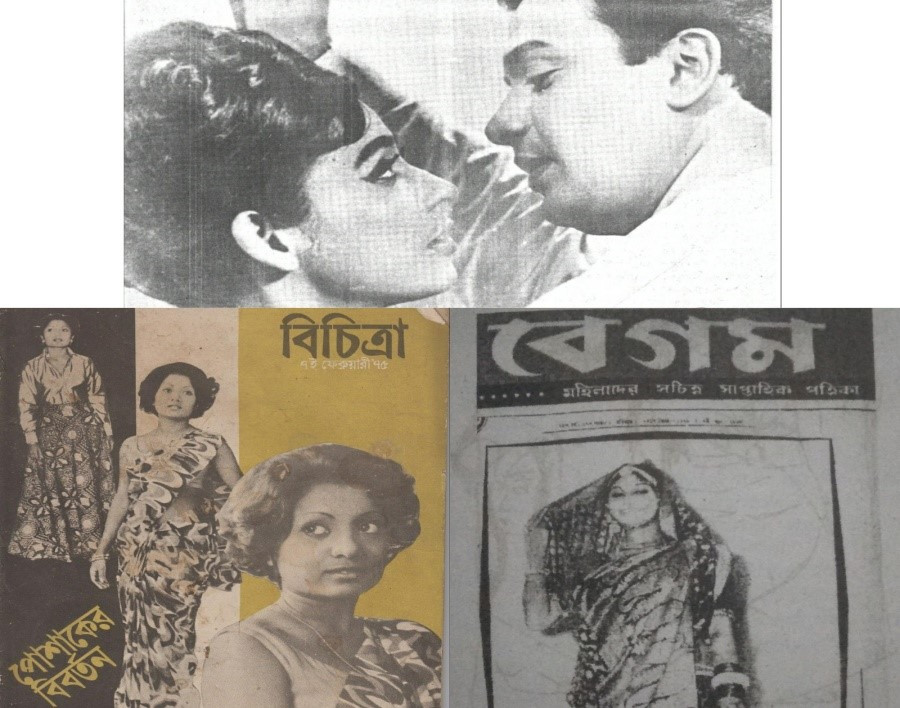The forefathers of viral content and click-bait
Periodicals, supplements and weeklies made the first successful uses of “click-bait” in Bangladesh and around the world before the Internet made it its own

"You won't believe your eyes when you see these pictures!"
"Top 5 things your favourite actor says that'll shock you!!"
The internet is brimming with dazzling headlines and eye-catching images that suck us in instantly and keep us glued, as we hop from one attraction to another.
These online articles and stories with their attractive headlines and cover photos are popularly termed "click-baits" which have become a part and parcel of our web surfing experience and an inseparable sensation that, albeit irritating at times, is quite addictive and consuming.
Click-baiting headlines and striking images to attract attention aren't the invention of the modern period, though. Their use goes back decades and in some countries, even centuries.
Periodicals, supplements and weeklies made the first successful uses of "click-baiting" in many regions, including British Bengal, long before the Internet claimed it.

Bengali periodicals such as Sangbad Pravakar, Bengal Gazette and other nineteenth century publications lacked enough audience to make successful use of that strategy since a tiny portion of the population was literate and printed papers were a luxury for an overpopulated agro-society.
But the 1960s and 1970s saw a tremendous rise of literacy rate in the then East Pakistan. The emergence of a middle class created the perfect atmosphere for periodicals to flourish. Janata, Holliday, Chitrita as well as many others caught public attention.
Magazines and supplements started publishing what they considered to be interesting and eye-catching content (which proved to be financially viable as well). At a time when the social and political atmosphere of the entire Bengal region was quite volatile, the periodicals and their dazzling stories provided an escape for a tired populace, which can be described using Professor Brian Maidment's words as an example of 'diversion being more marketable than information'.
Bangladeshi periodicals as well as Indian ones such as Jonaki, Dhulokhela and others brought the glamorous film world right into the conservative middle-class homes. Concepts as feminism and women's independence also struck society in a new light.

But, of course, these periodicals weren't only about diversions. They brought up social issues, politics and cultural debates as well. Striking and sometimes provocative images stunned the people with shock and horror (emotions that wouldn't be triggered in a bland news article). One edition of The Sangbad featured a shocking picture of starving children with a heart-breaking title.
Provocative headlines or images to draw public attention have been the hallmark of Bengali journalism (at least for the periodicals) since the partition itself. For example, depiction of West Pakistan's ill treatment of the eastern wing became highly popular and discussed during the Pakistani period (1947-1971).
The periodicals, though effective in attracting public attention to social issues some of the time, also proved to be a source of cheap consumption. Unrelated, sometimes irrelevant, information was fed to the people under the guise of interesting titles. This led to a time when even health tips had to be written and advertised in a way that'd appeal to the public. The rush for popular attention, therefore, started long before the birth of the Internet.

The titles and the cover photos attracted people much like they do in today's internet. The periodicals which turned into the centre of discussions for many in the country (in most cases, they outsold the newspapers of the day too) became obsolete in the twenty first century with the advent of the Internet as click-baits and flashy emojis replaced them.
However, the Internet is not the only factor that contributed to their downfall, many popular weeklies lost their appeal once the original writers, contributors and editors retired, many went bankrupt after failing to survive in a fiercely competitive atmosphere. Weeklies like the Bichitra – once famous for its scathing criticism of social issues, government policies and literary pieces – got suppressed during the military rule of General Ershad in the '80s and eventually discontinued. This fate, however, was shared by many weeklies later in the century. Eventually, the periodicals have become a thing of the past and in today's world they enjoy a fraction of public attention they once did.

All said and done, periodicals, supplements, weeklies and monthlies have left a deep mark in our society or for that matter in every society. Today's Internet click-baits and viral stories keep us glued online for the better part of the day, but it's worth remembering that the strategies behind Internet's greatest attractions were born in ink and paper, and their births precede that of the Internet itself by a long time.
(Sources: Public domain of the web, personal collection of magazines and Van Schendel's "A History of Bangladesh")



 Keep updated, follow The Business Standard's Google news channel
Keep updated, follow The Business Standard's Google news channel
















